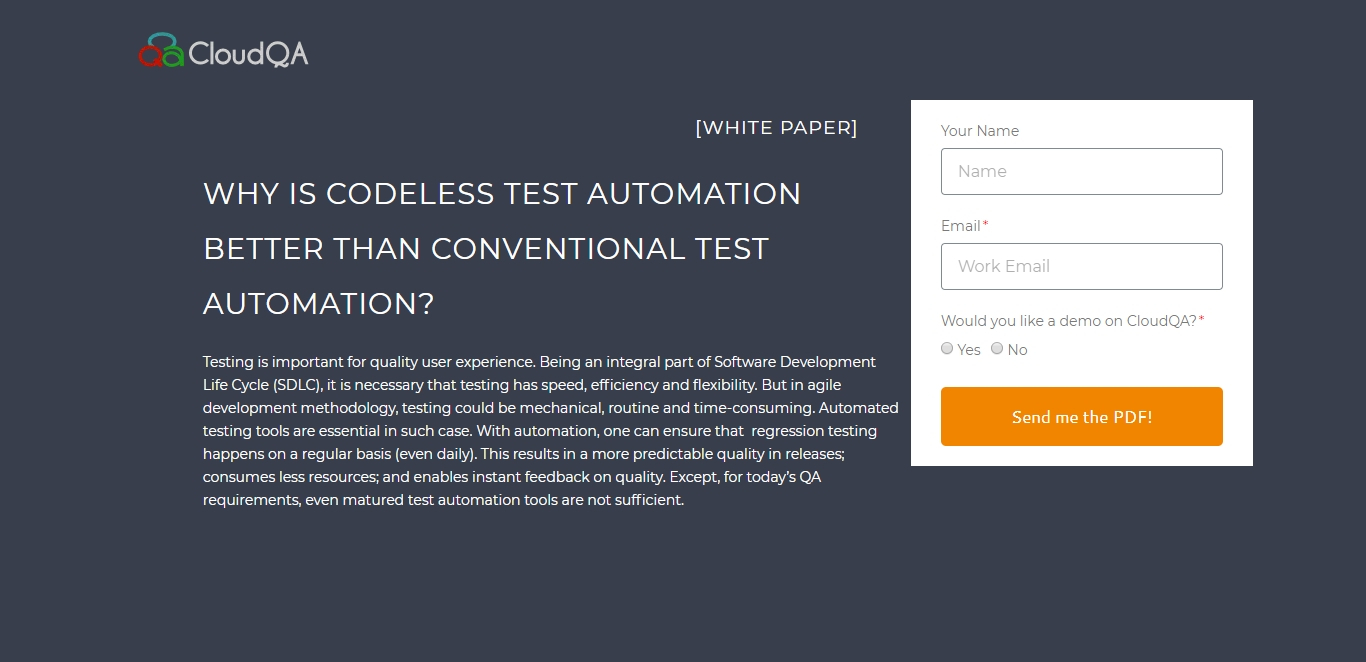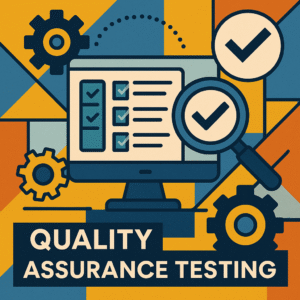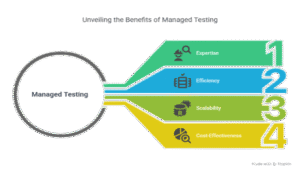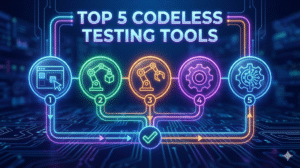How LLMs Are Reshaping QA in 2025: Beyond the Hype
Last Updated: December 23rd 2025
Tired of debugging flaky scripts? Let Large Language Models handle the heavy lifting. See CloudQA’s LLM-powered engine in action or request a technical demo to upgrade your testing stack.
In 2023, Large Language Models (LLMs) were a novelty. Engineers played with ChatGPT to write funny poems or generate basic Python scripts. In 2025, LLMs have become infrastructure. They are no longer just a “feature” of modern software; they are the engine driving the Third Wave of Automation.
For Quality Assurance professionals, this shift is disorienting. We spent decades learning to think in binary: Pass or Fail. True or False. Selector found or Selector not found. LLMs operate differently. They operate in probabilities, context, and semantics.
This capabilities shift is not just changing how we test; it is changing what is possible to test. We are moving from “Automated Checking” (verifying known paths) to true “Automated Testing” (intelligent exploration).
For a complete guide to using AI in Test Automation, refer to our master article here.
This article explores the technical mechanics of how LLMs are reshaping QA right now, focusing on self-healing, generative creation, and intelligent debugging.
Table of Contents
1. The Death of the “Flaky Test” (Semantic Self-Healing)
The single biggest complaint in test automation has always been maintenance. A developer changes a class name, and the nightly build fails. The QA engineer spends four hours debugging, only to find the application works fine, the script was just brittle.
LLMs solve this by changing how elements are identified.
The Old Way: Rigid Selectors
Traditional automation relies on strict paths: //div[@id=’submit-btn’]. This is fragile. If the ID changes, the link is broken.
The LLM Way: Vector Embeddings
LLMs do not just look at the code; they look at the meaning. When an LLM analyzes a webpage, it can convert the elements into “Vector Embeddings”—mathematical representations of what the element is.
When a test runs, the AI looks for the “Submit Button.” If the ID #submit-btn is missing, the LLM analyzes the page structure. It sees a button that is green, contains the text “Complete Order,” and sits next to a “Total Price” field.
Mathematically, this new button has a 99% semantic similarity to the old button. The LLM infers that this is the correct element, clicks it, and updates the test script automatically. This is the “Self-Healing” capability we emphasize in our 2025 Guide to AI Testing Automation. It turns brittle scripts into resilient agents.
2. Generative Test Creation: From Requirement to Code
Writing test cases is often a bottleneck. It involves translating a User Story (written in English) into manual test steps (English) and then into automation code (Java/JS/Python).
LLMs excel at translation. They can short-circuit this entire loop.
Natural Language Processing (NLP)
Modern QA tools allow you to paste a Product Requirements Document (PRD) or a Jira ticket directly into the system. The LLM parses the text to understand the “Acceptance Criteria.”
It then generates:
- Test Strategy: A list of high-level scenarios (Happy Path, Negative Path, Edge Cases).
- Test Data: Synthetic users, addresses, and inputs required to run the tests.
- Automation Scripts: The actual code (or low-code steps) to execute the test.
This aligns with the Low-Code approaches we advocate for. It shifts the QA role from “Writing Boilerplate” to “Reviewing Logic.” You are no longer the writer; you are the editor.
3. Intelligent Root Cause Analysis (RCA)
When a CI/CD pipeline fails, the logs are often thousands of lines long. Finding the error is like finding a needle in a haystack.
LLMs are exceptionally good at pattern recognition in text. An LLM-integrated testing platform can ingest the console logs, network traffic, and DOM snapshots at the moment of failure.
Instead of throwing a cryptic NullPointerException, the AI analyzes the context and provides a human-readable summary:
“The test failed because the ‘Checkout’ button was intercepted by a pop-up modal offering a 10% discount. This modal appeared 500ms after page load, which blocked the click.”
This reduces the Mean Time to Resolution (MTTR) from hours to minutes. It acts as a junior developer who has already triaged the bug before you even open your laptop.
4. The Challenge of “Testing the Tester”
While LLMs are powerful, they are not magic. They introduce a new risk: Hallucination.
If you ask an LLM to generate a test case for a login page, it might assume there is a “Forgot Password” link because almost all login pages have one. If your specific application doesn’t have that link, the generated test is invalid.
This requires a new discipline: Prompt Engineering for QA. We must learn to constrain the AI. We cannot just say “Write a test.” We must say “Write a test based strictly on the DOM structure provided below. Do not assume external links exist.”
This is why “Human in the Loop” remains critical. AI is an accelerator, not a replacement for domain knowledge.
5. Synthetic Data Generation
Testing requires data. GDPR and CCPA regulations make it difficult to use production data in staging environments. Masking data is tedious and often breaks data integrity (e.g., breaking the checksum on a credit card number).
LLMs can generate infinite variations of fake but mathematically valid data. You can ask an LLM to “Generate 50 valid US addresses in the state of California” or “Generate 10 SQL injection strings to test the search bar.”
This capability is essential for Software Engineering Leaders who need to ensure compliance without slowing down development velocity.
How CloudQA Harnesses LLMs
We did not just bolt an LLM onto a legacy tool. CloudQA’s architecture was designed to be data-centric, which makes it the perfect host for AI models.
Our platform utilizes LLMs to:
- Interpret Intent: You can write test steps in plain English (“Click the profile icon”), and our model translates that into a robust element locator.
- Analyze Health: We monitor your test suite over time. If a test becomes “flaky” (passing and failing intermittently), our AI flags it and suggests optimizations (e.g., “Add a dynamic wait here because the API response time varies”).
- Self-Heal at Scale: We run self-healing algorithms across our entire grid, ensuring that a UI change that affects 50 tests is fixed in all 50 tests simultaneously.
Conclusion
LLMs are reshaping QA by moving us up the abstraction ladder. We are no longer testing pixels; we are verifying intent.
The tools available in 2025 allow us to test faster, cover more ground, and fix bugs cheaper than ever before. However, they require a mindset shift. We must be willing to let go of the rigid control of the past and trust in probabilistic systems, verified, of course, by human expertise.
Frequently Asked Questions
Q: Do LLMs make test execution slower?
A: The inference time (the time it takes the AI to “think”) adds a few milliseconds, but this is negligible compared to the time saved by not having tests fail due to bad selectors. The net result is a faster, more reliable pipeline.
Q: Can LLMs write code for complex logic?
A: Yes, they are excellent at generating JavaScript or Python snippets for complex calculations or data parsing. However, complex business logic (e.g., “If user is Tier 1, calculate tax at 5%”) should still be reviewed by a human to ensure the requirements were understood correctly.
Q: Is my data safe when using LLM-based testing tools?
A: Enterprise-grade tools like CloudQA use private instances of models or sanitize data before sending it to an API. You should always check if your vendor uses your data to train public models (CloudQA does not).
Related Articles
RECENT POSTS
Guides

How To Select a Regression Testing Automation Tool For Web Applications
Regression testing is an essential component in a web application development cycle. However, it’s often a time-consuming and tedious task in the QA process.

Switching from Manual to Automated QA Testing
Do you or your team currently test manually and trying to break into test automation? In this article, we outline how can small QA teams make transition from manual to codeless testing to full fledged automated testing.

Why you can’t ignore test planning in agile?
An agile development process seems too dynamic to have a test plan. Most organisations with agile, specially startups, don’t take the documented approach for testing. So, are they losing on something?

Challenges of testing Single Page Applications with Selenium
Single-page web applications are popular for their ability to improve the user experience. Except, test automation for Single-page apps can be difficult and time-consuming. We’ll discuss how you can have a steady quality control without burning time and effort.

Why is Codeless Test Automation better than Conventional Test Automation?
Testing is important for quality user experience. Being an integral part of Software Development Life Cycle (SDLC), it is necessary that testing has speed, efficiency and flexibility. But in agile development methodology, testing could be mechanical, routine and time-consuming.






